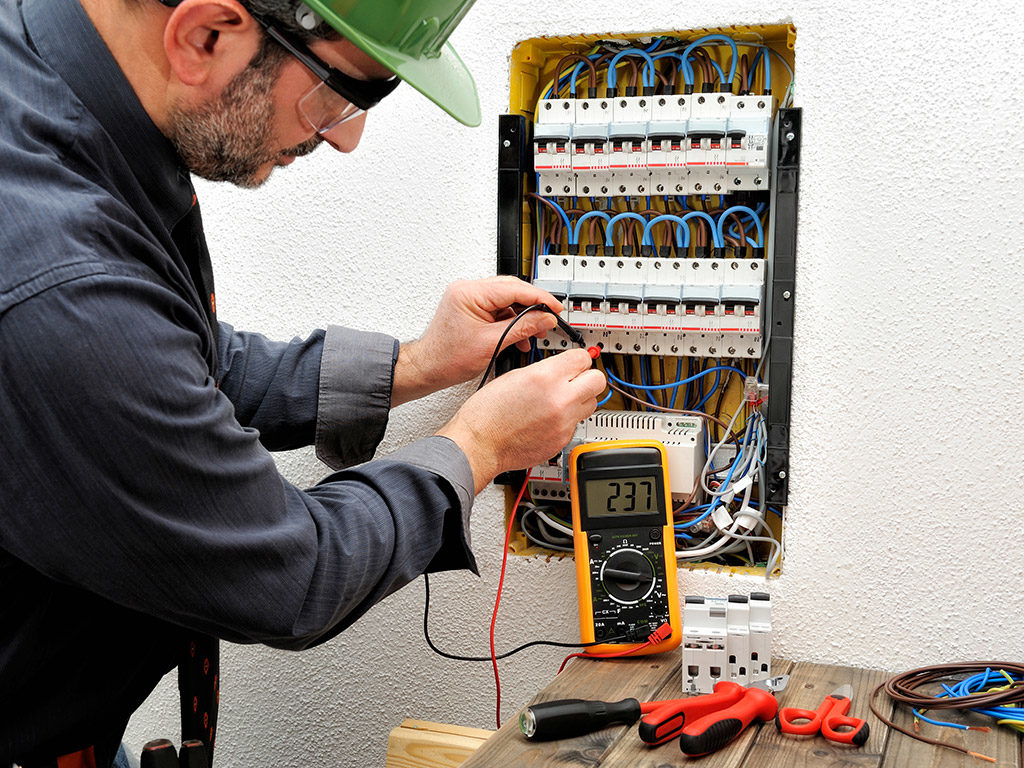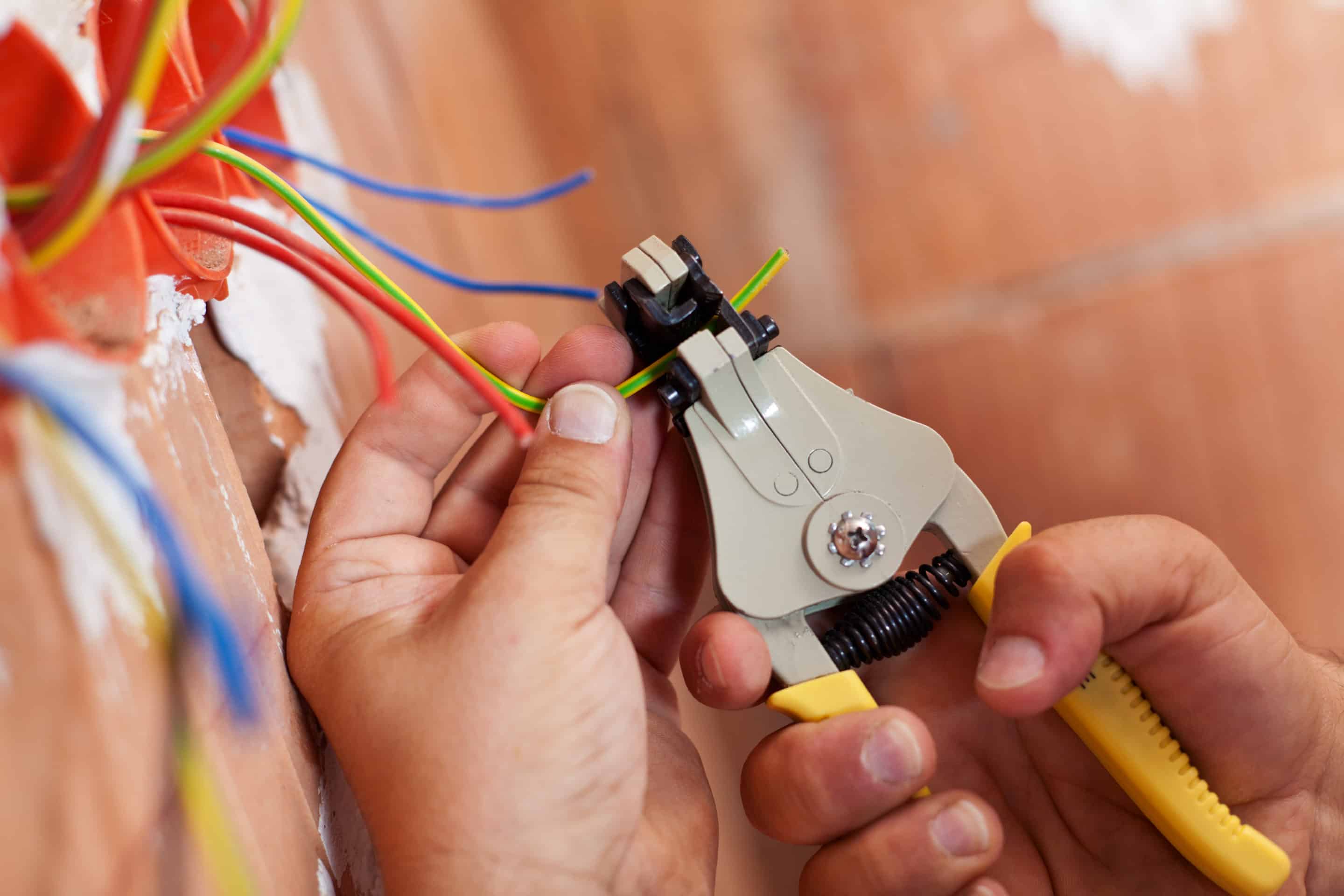Usual Electric Issues Every Homeowner Ought To Find out about
Homeowners commonly come across various electrical problems that can affect safety and capability. Issues like flickering lights and tripped breaker are extra usual than several understand. These circumstances can show deeper electric problems that warrant interest. Recognizing the risks and signs connected with outdated circuitry and dead electrical outlets is essential. What steps can be taken to avoid these problems? Exploring these common electric issues can disclose essential understandings for maintaining a risk-free home environment.

Flickering Lights: Reasons and Solutions
Why do some home owners experience flickering lights? Flickering lights can be a common inconvenience, commonly suggesting underlying electrical concerns. One primary reason is loosened or defective connections within lighting fixtures or wiring, which can cause periodic power supply. Furthermore, using high-wattage appliances on the very same circuit might create voltage variations, resulting in dimming or flickering. An additional possible issue is an overloaded circuit, where way too many tools attract power simultaneously, stressing the electrical system. Out-of-date or degraded electrical wiring can add to inconsistent electric flow. In some instances, flickering lights might signify an issue with the home's electrical panel or solution line. House owners need to attend to flickering lights immediately to avoid possible hazards. Solutions may include tightening connections, rearranging home appliance lots, or seeking advice from a qualified electrician for a complete assessment. Determining the origin can aid assure a steady and safe electric system in the home.
Tripped Circuit Breakers: What You Required to Know
Have house owners ever before questioned what creates their circuit breakers to journey suddenly? This common problem frequently arises from an overload of electric circuits, where way too many tools attract power at the same time. In such instances, the circuit breaker functions as a security system, disrupting the flow of electrical energy to prevent getting too hot and potential dangers. One more constant reason is a short circuit, which occurs when a real-time wire contacts a neutral cable, developing a surge of electrical energy that journeys the breaker. Ground faults can additionally cause tripped breakers; these occur when an online wire touches the ground or a based surface area, posing significant safety dangers. Home owners ought to frequently assess their usage of high-wattage home appliances to avoid overloading circuits. Furthermore, recognizing the function of circuit breakers can aid them respond properly during a trip, guaranteeing their home stays well-kept and secure.
Out-of-date Circuitry: Dangers and signs
Outdated electrical wiring can pose substantial dangers to homeowners, typically going undetected until problems occur. Houses developed prior to the 1980s might still have light weight aluminum circuitry or knob-and-tube systems, which are no more thought about secure. Indicators of outdated circuitry consist of flickering lights, frequently tripped circuit breakers, or melting smells near outlets. These indicators might suggest that the electrical system is overloaded or deteriorating.Additionally, homeowners could notice burn marks around switches or electrical outlets, which can show getting too hot. The threat of electrical fires markedly raises with out-of-date electrical wiring, as these systems were not developed to manage modern electrical loads. Homeowners are motivated to have their circuitry examined consistently, specifically when restoring or including brand-new home appliances. By acknowledging these indicators early, they can avoid hazardous circumstances and keep a safer living setting. Upgrading to current electrical criteria is a proactive action in keeping home security and efficiency.
Regularly Blown Fuses: Fixing Tips
Constant blown fuses can show underlying electric concerns that might come from out-of-date wiring or overloaded circuits. Property owners experiencing this issue needs to initially identify the home appliances connected to the impacted circuit. It is recommended to avoid making use of numerous high-wattage devices at the same time, as this can bring about circuit overload. If the issue persists, evaluating the fuse box for indications of wear or damage is crucial; a damaged fuse box might call for replacement.Additionally, looking for loose links within the circuit can assist prevent future events. Property owners need to also confirm that the merges being utilized are of the proper amperage, as using an inaccurate fuse can aggravate the issue. If these repairing tips do not fix the concern, seeking advice from a qualified electrical expert is advised to evaluate the electric system additionally. Resolving these problems promptly can help reduce dangers and ensure the safety and security of the home's electric facilities.
Dead Electrical Outlets: Typical Causes and Solutions
When a homeowner runs into a dead electrical outlet, it can often provide disappointment and complication. Several usual causes may result in this issue. One frequent offender is a tripped circuit breaker, which can be conveniently reset. If any kind of breakers are in the off placement, house owners ought to evaluate their electric panel to inspect. Another opportunity is a faulty electrical outlet itself, which might require substitute. Furthermore, loosened electrical wiring links within the outlet can disrupt power flow, making evaluation essential.Sometimes, the trouble might originate from an overloaded circuit, specifically when multiple gadgets are connected. In such situations, redistributing the electric load can resolve the concern. Home owners must additionally think about the age of their wiring; older systems may call for updates to meet contemporary electrical needs. If these actions do not rectify the scenario, consulting a licensed electrical expert is suggested to assure safety and correct medical diagnosis.
Electric Shocks: When to Be Worried
How can home owners figure out whether an electrical shock warrants concern? House owners need to initially assess the extent and context of the shock. A moderate static shock, usually felt when touching steel objects, is common and normally safe. If the shock takes place while interacting with a plugged-in device or outlet, it might show a more major issue.The click reference area and frequency of the shocks are essential. Repeated shocks from the exact same source, especially in damp areas like kitchen areas or restrooms, can signify defective electrical wiring or poor grounding. Home owners need to also think about the feeling of the shock; a jolt that causes pain or contraction is a lot more disconcerting than a simple tingle.If there's any unpredictability, go to website it is a good idea to consult a qualified electrical contractor. Disregarding potential electric threats can cause severe security risks, consisting of fire or severe injury.
Overloaded Circuits: Prevention and Precaution
Overloaded circuits present considerable risks in property settings, usually leading to electric fires or devices damage (Accredited Service Provider Level 2 Electrician). Homeowners need to recognize the indicators of an overloaded circuit, such as often stumbled breakers or dimming lights. Implementing preventative safety and security methods can aid reduce these risks and assure a much safer living environment
Identifying Overloaded Circuits
What indicators show that a circuit may be overwhelmed? Homeowners need to be cautious for several essential indicators. Frequently tripped circuit breakers or blown integrates recommend extreme lots on the circuit. Dimming or flickering lights, particularly when other devices are in usage, can signify an insufficient power supply. In addition, outlets or buttons that really feel cozy to the touch may suggest getting too hot, a potential fire danger. Uncommon humming audios from outlets also call for focus, as they can indicate electrical problems. If devices run inefficiently or stop working to start, it may be an indication of an overloaded circuit. Recognizing these indicators early can aid prevent serious electrical problems and promote a more secure home atmosphere.
Preventive Safety And Security Practices
To keep a effective and secure electric system, property owners must execute preventive security methods that resolve possible circuit overloads. One effective procedure is to prevent linking way too many tools to a solitary outlet, as this can go beyond the circuit's ability. Making use of power strips with integrated breaker can aid disperse power safely. Property owners must also frequently examine cables and appliances for damages and change any type of damaged equipment immediately. It is vital to ensure that circuit breakers are functioning appropriately and to be mindful of the overall wattage being utilized in each circuit. Additionally, consulting a licensed electrical expert for regular evaluations can identify possible problems before they escalate, guaranteeing a much safer living environment and lengthening the life expectancy of electric systems.
Frequently Asked Concerns
How Usually Should I Have My Electrical System Inspected?
Normal evaluations of electric systems are advised every 3 to five years. Property owners should consider a lot more regular checks if they experience concerns, take on renovations, or reside in older homes to guarantee security and compliance.
Can I Fix Electrical Issues Myself or Work With an Expert?

What Are the Indications of an Electric Fire Threat?
Signs of an electric fire threat include often tripped breaker, flickering lights, burning smells, stained electrical outlets, or warm, humming cables. Home owners should continue to be watchful and seek professional help if any of these indications exist.
How Do I Know if My Home Requirements an Electric Upgrade?
To figure out if a home requires an electrical upgrade, indicators include frequent circuit breaker trips, out-of-date circuitry, inadequate electrical outlets, flickering lights, and the existence of older electric panels, showing prospective safety and security dangers and inadequacy.
Exist Details Security Tips for DIY Electrical Work?
When taking into consideration DIY electrical work, one should constantly switch off power, make use of protected tools, verify circuit performance, adhere to regional codes, and seek advice from professionals for complicated jobs to ensure safety and protect against mishaps. One more potential concern is an overloaded circuit, where too many gadgets draw power at the same time, stressing the electric system. The risk of electric fires markedly boosts with out-of-date electrical wiring, as these systems were not designed to manage modern-day electric lots. Regular blown fuses can suggest underlying electric issues that might stem from outdated wiring or overloaded circuits. To preserve a efficient and risk-free electric system, house owners should apply precautionary safety methods that attend to possible circuit overloads. check over here ASP Level 2 Electrician. Signs of an electrical fire risk include regularly stumbled circuit breakers, flickering lights, burning odors, stained outlets, or cozy, buzzing cables